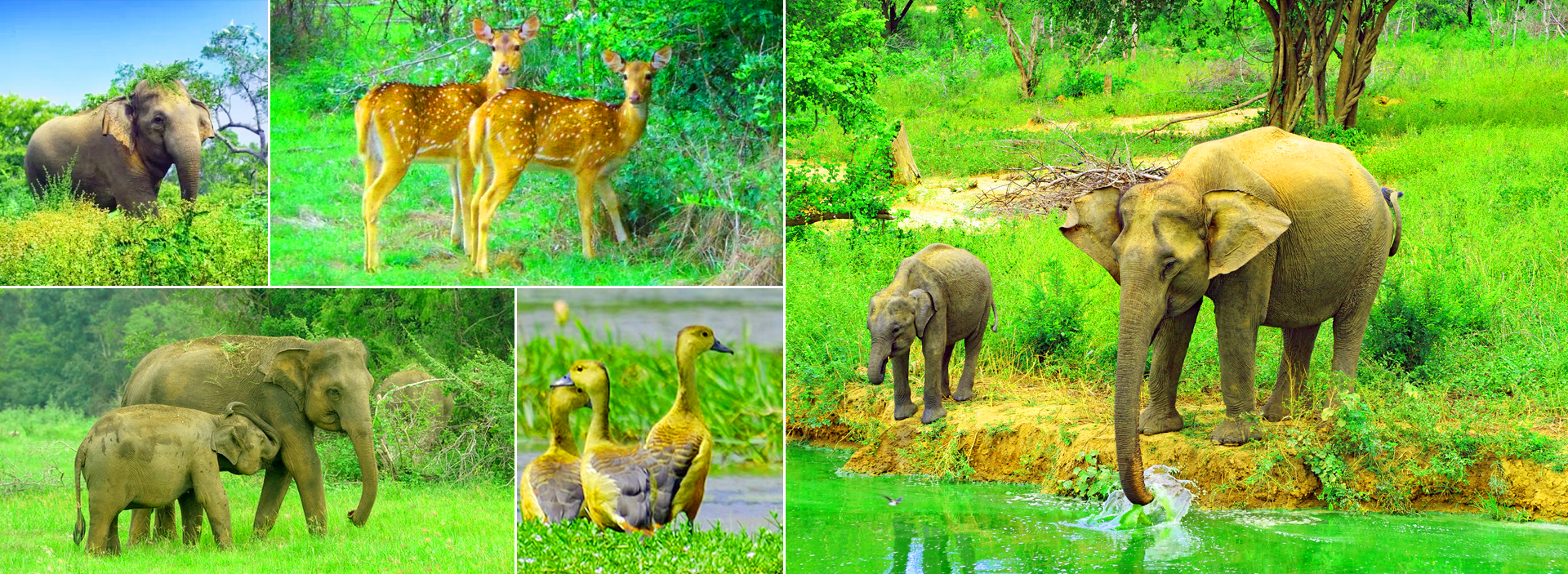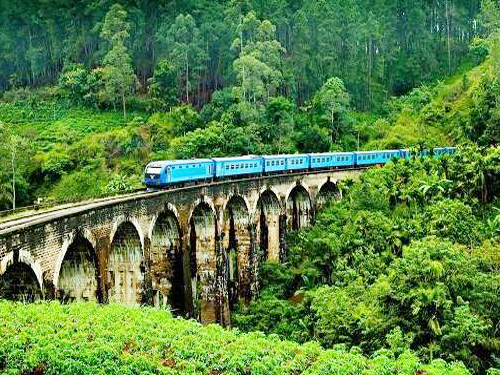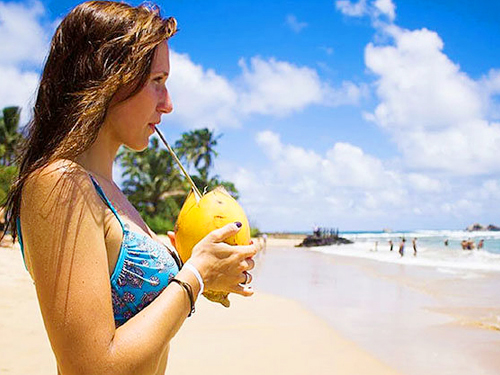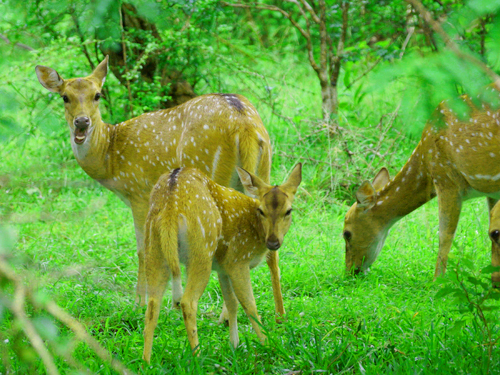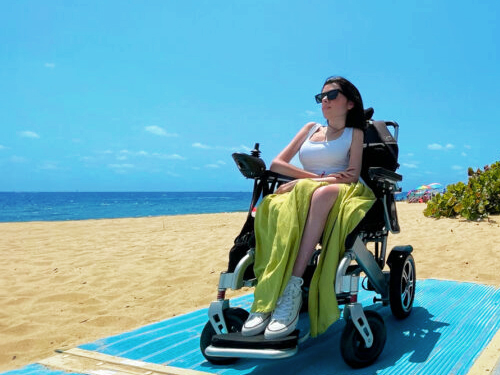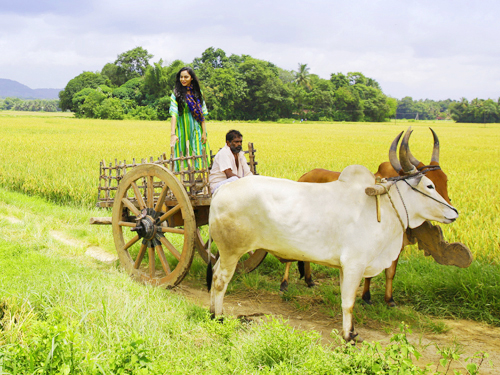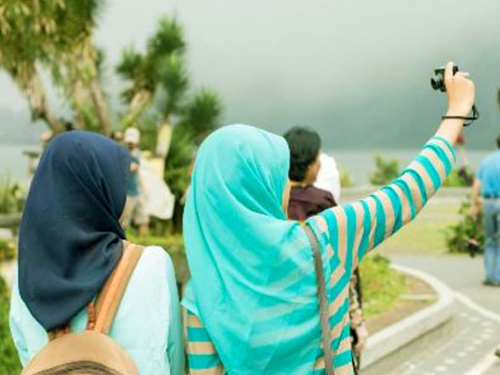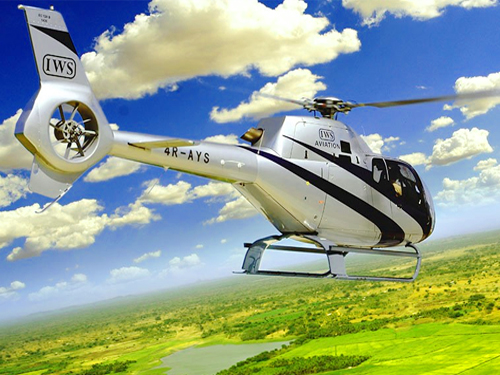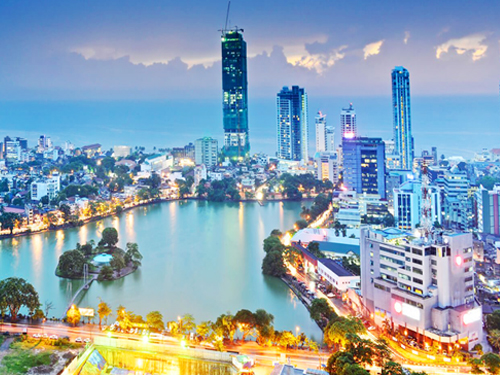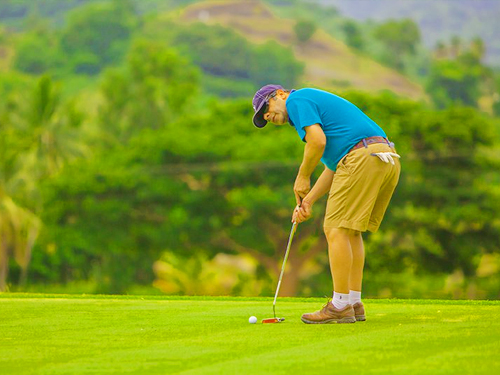Wasgamuwa in Sri Lanka
Annually, the National Park experiences a temperature of 28 degrees Celsius (82 degrees Fahrenheit) and it has a dry climate. The annual rainfall is between 1650 and 2100 mm. The northeastern monsoon is from October through January, when rain is received. The dry season is July-September. Sudu Kanda (White Mountain), at 470m (1,540 ft), is the highest point in the National Park. The soil in the national park is rich in quartz and marble. Wasgamuwa forests are Sri Lanka's dry-zone, evergreen forests. It is composed of primary, secondary, and riverine forests as well as grasslands.
Parakramabahu II built the Ruins of Malagamuwa and Wilmitiya irrigation tanks, Kalinga Yoda Ela channel, and Wilmitiya irrigation tanks. The water used to be irrigated by the Minipeanicut's left banks canal from ParakramaSamudra, Amban Ganga that had passed through Wasgamuwa.
YudanganaPitiya was identified as the battlefield where the battle between King Ellalan, King Dutthagamani took place. Kandaurupitiya is the name of the grassland where Dutthagamani’s army was believed to have camped prior to the battle. National park contains the remains of Chulanganichaitya, which King Mahanaga built. Its 966-foot circumference (294 m), is larger than that of Ruwanwelisaya. A bowl that King Sri VikramaRajasinha used to make was recovered from the bricks of chaitya. Several bronze statues have also been found in the Yudanganavihara.
The Wasgamuwa National Park can be found in northern central Province, specifically in the districts Matale and Polonnaruwa. Kandy is located 100km southwest of the park. Flood Plains National Park is an adjacent park. The park is home to the Amban and Mahaweli rivers, which provide water for the animals. The highest point is Sudu Kanda at 470m. It is made up of primary, secondary, and riverine forests as well as grassland. Wasgamuwa National Park is located in the "dry zone" of Sri Lanka's climate. This means that the average temperature in Sri Lanka is 28 degrees Celsius and rainfall falls mainly during the northeast monsoon, which runs from October to January. From July to September, the dry season is observed.
Wasgamuwa National Park has one of the highest diversity levels among all the protected areas in Sri Lanka. More than 150 species of flowers have been documented from the park. Two plants of economic value are Munroniapumila and CryptocoryneWalkeri. Numerous fauna species are supported by riverine forests and reservoirs. There are many layers to the forest. The emergent layer is dominated by Chloroxylon, ManilkaraHexandra and Elaeodendroncanescens. Other strata include Polyalthiakorinti (Polyalthiaverrucosus), Diplodiscusverdeus, Limoniaacidissima and Cassia roxburghii. Strobilanthesstenoden is also common. Some 1,700 years old tamarind tree, "OruBendiSiyambalawa" (Sinhala for Canoes-Moored-Tamarind) was situated in the park.
The Wasgamuwa National Park hosts 23 species of mammals. A herd of 150 Sri Lankan Elephants lives in the park. The Mahaweliriver is home to the Marsh elephant (Elephasmaximusvill-aliya). The park's two monkeys, the purple-faced langur (and the toque macaque) are both endemic to Sri Lanka. Although water buffalo and Sri Lankan Axis Deer are easy to spot, the rarer species of Sri Lanka leopard or sloth bear can be seen. Another rare endemic mammal is the small golden palm civet.
There are 143 bird species that have been recorded in the park, including 8 endemic species. The park is home to the red-faced malkoha, an endangered bird. Another endemic bird is the Sri Lankan junglefowl. The national park's streams and reservoirs are home to the yellow-fronted barbet (a less common adjutant), and the Sri Lanka spurfowl. Other aquatic birds found in the park include peafowl and painted stork. Here is a rare Sri Lankan frogmouth. A chestnut-winged cuckoo is another rare species that can be found near the Mahaweli River.
One of the eight amphibian species in the park is endangered and endemic FejervaryaPulla. The park's waterbodies are home to the water monitor and the mugger crocodile. The endangered reptile species include skinks Lankascincus, Otocryptiswiegmanni and Calotesceylonensis lizards, as well as serpent Chrysopeleataprobanica. Garraceylonensis, combtail and Endemic Garraceylonensis are just a few of the 17 species of fish that live in the park's aquatic habitats. Eight of the park's 50 species of butterflies are endemic.
The Sloth Bear of Sri Lanka is recognized as a subspecies. The species is endangered with less than 1000 individuals remaining worldwide and only 500 in Sri Lanka's wild habitats. The Sri Lankan Sloth Bear, which is primarily omnivorous, is heavily dependent on forests. This is why the main reason for its decline is forest destruction. This park is known for being the best place to see these animals. The name Wasgamuwa comes from the Sinhala "WalasGamuwa" where "walaha" means bear and "gamuwa" means woods.
The decline in sloth bear numbers has made Wasgamuwamore vast. These elusive animals are rarely seen out in the open. Wasgamuwa's elephants are very different from those at other National Parks. They live in the wild and are not allowed to be accompanied by safari jeeps. Their behavior is wild, so you can see what wild elephant activity looks like.
There are 23 species in Wasgamuwa. There are 23 species of mammals at Wasgamuwa. Toque Macaque and the Purple-faced Langur are both endemic to Sri Lanka. Although Water Buffalo and Sri Lankan Axis Deer can be found all over the country, it is difficult to spot the Sri Lanka Leopard or Sloth Bear. Another endemic mammal, the Small Golden Palm Civet, can be found at Wasgamuwa.
Five of the 17 species of reptiles found in the Park are endemic to Sri Lanka. Common reptiles include the Water Monitor and Muggercrocodile. One of the eight species of amphibians that are endemic in Sri Lanka is the endangered FejervaryaPulla.
The National Park has an average annual temperature of 28 degrees Celsius and a dry climate. The annual rainfall is between 1,650 and 2,100mm, with July through September being dry season. Sudu Kanda (White Mountain), which is 470m high, is the highest point in Wasgamuwa National Park.
The Wasgamuwa National Park can be found in Matale and Polonnaruwa. It is bordered on the Mahaweli River and Amban Rivers. You can also travel by road from Colombo to Hasalaka via the Kandy–Mahiyangana Road. From there, take Wilgamuwa and continue on to Wasgamuwa. This is approximately 140 miles (225km) away. You can also catch an Air Taxi (Peliyagoda), from Colombo. Once you land at Kandy Victoria or Polgolla, you will be able to travel by road to the Wasgamuwa National Park. You can also fly by helicopter to the Bandaranaike Airport, Ratmalana or Wasgamuwa. From there you can reach the Park via road.
The villages bordering Wasgamuwa National Park are surrounded by lush, naturally irrigated land that is constantly fed by the waters of the rivers. They are mainly made up of agricultural communities. The most popular is paddy cultivation. You will see many farmers working in the fields as you travel towards the Park.Although you might encounter elephant fences, it is not uncommon for humans to come into conflict with elephants due to their proximity to the National Park.
Things to do in Wasgamuwa National Park
Wasgamuwa National Park Safari
A safari ride through the Park will take you to the wonders of wild animals and birds. It's a great way to get some fresh air, as well as the opportunity for you to experience the Park's natural beauty. The driver will drive you through the forest while you enjoy the ride. You'll also see miniature water pools in the Wasgamuva National Park. You'll see pythons and crocodiles swimming in these water pools as well as aquatic birds enjoying the pools. Wasgamuva is a great place to take pictures of nature in its best light. You should not make any noises while on safari, as many animals will run away from humans. You might be able to see elephants relaxing in open areas, eating fresh green grass and taking a nap.
Ancient Buduruwayaya Ruins
Within the Wasgamuva National Park, the Buduruwayaya Ruins are an ancient monument. A group of Buddhist temples dating back 1800 years are found within the Buduruwayaya Ruins. The temple is fenced with archaic stone columns and a reclining Buddha statue. You will see another statue of a reclining Buddha sitting in the middle of the greenery if you walk out of Buduruwayaya's ruins. You can find the ruins on the map of Wasgamuva National Park at the confluence between River Amban, River Kalu.
Camping
If you have enough time and would like to explore the park's wilderness more deeply, you can join the Wasgamuva National Park Camping. The three-day camp includes two nights and two nights. It also includes two safari sessions in the National Park. Campers will share standard tents and have fun with other campers. The organizers also provide a three-course barbecue dinner that you can enjoy under the stars. Many tour companies and companies organize camps in the Wasgamuwa National Park. Sri Lanka.

 Safe Travels
Safe Travels Français
Français Deutsch
Deutsch עִברִית
עִברִית Italiano
Italiano Nederlands
Nederlands Polski
Polski Pусский
Pусский Español
Español